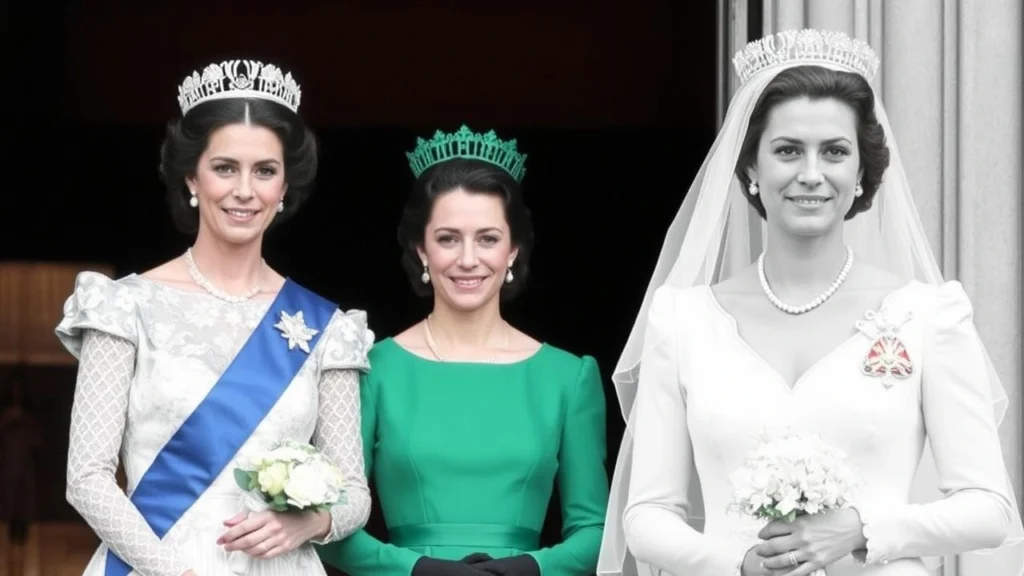Royalty, with its gilded carriages and fairytale weddings, often seems a world away from the everyday struggles of ordinary people. Yet, behind the polished facade of palaces and grand titles lie lives as susceptible to heartbreak and turmoil as anyone else’s. Divorce, a phenomenon that has touched countless families across the globe, has also left its mark on the history of royal families. When a royal marriage crumbles, it’s not just a personal matter; it becomes a public spectacle, scrutinized by the world and capable of shaking the very foundations of the monarchy.
This article delves into six royal divorces and rumours that have reverberated through the corridors of power, challenging traditions and captivating the public’s imagination. These stories offer a glimpse into the human side of royalty, reminding us that even those born into privilege aren’t immune to the complexities of love, loss, and societal expectations.

1. Henry VIII and Catherine of Aragon (1533)
Let’s start with a big one, shall we? The divorce of King Henry VIII and Catherine of Aragon is arguably the most consequential royal divorce in history. It wasn’t just a marriage ending; it was a catalyst for religious and political upheaval that forever changed England.
Henry, desperate for a male heir to secure the Tudor dynasty, grew increasingly frustrated with Catherine’s inability to produce one. He became infatuated with Anne Boleyn and sought an annulment from his marriage to Catherine, arguing that their marriage was invalid because Catherine had previously been married to his brother.
When the Pope refused to grant the annulment, Henry took matters into his own hands. He broke with the Roman Catholic Church, declared himself the Supreme Head of the Church of England, and granted himself the divorce he so desperately desired. This act not only allowed him to marry Anne Boleyn but also triggered the English Reformation, reshaping the religious landscape of England for centuries to come.
“I am determined to obtain a divorce, and nothing shall turn me from my purpose.” – Henry VIII
Key Players:
| Person | Role |
|---|---|
| Henry VIII | King of England |
| Catherine of Aragon | Queen of England, Henry’s first wife |
| Anne Boleyn | Henry’s mistress, later his wife |
Impact:
- English Reformation
- Establishment of the Church of England
- Execution of Anne Boleyn (later)
2. Princess Margaret and Antony Armstrong-Jones (1978)
Fast forward a few centuries, and the divorce of Princess Margaret, the younger sister of Queen Elizabeth II, from Antony Armstrong-Jones (later Lord Snowdon) marked a significant shift in the public perception of the royal family. In the 1950s, Margaret was a glamorous and rebellious figure, and her marriage to the bohemian photographer Armstrong-Jones in 1960 was seen as a modern fairytale.
However, the marriage was plagued by infidelity and clashes of personality. Both parties were known for their fiery tempers and extramarital affairs. The press relentlessly documented their turbulent relationship, contributing to a growing sense of public scandal.
In 1978, after years of speculation and rumour, the couple officially divorced. It was the first royal divorce in Britain since Princess Victoria Melita of Saxe-Coburg and Gotha divorced her husband in 1901. While divorce was becoming more common in society, it was still a taboo subject within the royal family, making Margaret’s divorce a watershed moment.
Key Issues:
- Infidelity on both sides
- Clashing personalities
- Public scrutiny and press intrusion
3. Prince Charles and Princess Diana (1996)
Perhaps the most globally publicized royal divorce of the 20th century, the separation and eventual divorce of Prince Charles and Princess Diana sent shockwaves across the world. Their wedding in 1981 was a fairytale come to life, watched by millions. Diana, with her beauty and charisma, quickly became a global icon, breathing fresh air into the sometimes stuffy atmosphere of the royal family.
However, behind the scenes, the marriage was crumbling. Charles was still in love with Camilla Parker Bowles, his former girlfriend, and Diana struggled to adapt to the rigid protocols and pressures of royal life. Both Charles and Diana engaged in extramarital affairs, and their unhappiness became increasingly apparent to the public.
The official separation was announced in 1992, followed by a formal divorce in 1996. Diana’s tell-all interviews and her tragic death in a car accident a year later only amplified the scandal and left a lasting impact on the monarchy’s image.
Contributing Factors:
- Charles’s affair with Camilla Parker Bowles
- Diana’s struggles with mental health and bulimia
- Incompatible personalities and expectations
- Intense media scrutiny
4. Prince Andrew and Sarah Ferguson (1996)
While the spotlight was firmly on Charles and Diana, another royal marriage was also falling apart. Prince Andrew, the Duke of York, and Sarah Ferguson, Duchess of York, known affectionately as “Fergie,” had married in 1986. Their marriage was initially perceived as a success, bringing a fun and informal energy to the royal family.
However, Fergie struggled to adapt to royal life and faced constant criticism from the press. She was often portrayed as reckless and extravagant. Meanwhile, Andrew’s naval career kept him away from home for extended periods, putting a strain on their relationship.
The couple separated in 1992 and divorced in 1996. Despite the divorce, Andrew and Fergie have maintained a close relationship and continue to live near each other.
Primary Reasons:
- Difficulties adapting to royal life
- Constant media criticism
- Andrew’s demanding naval career
- Financial pressures
5. Princess Anne and Captain Mark Phillips (1992)
Princess Anne, the Queen’s only daughter, married Captain Mark Phillips in 1973. While their marriage produced two children, Peter and Zara, it was not without its challenges. Both Anne and Mark were known for their independent and strong-willed personalities.
Rumours of infidelity plagued the marriage for years, and Anne eventually began a relationship with Commander Timothy Laurence. She and Mark separated in 1989 and divorced in 1992. Anne married Timothy Laurence later that year.
Underlying Issues:
- Rumours of infidelity
- Independent personalities
- Lack of shared interests
6. Peter Phillips and Autumn Kelly (2021)
More recently, the divorce of Peter Phillips, Princess Anne’s son, and Autumn Kelly in 2021 served as a reminder that even the younger generation of royals isn’t immune to marital difficulties. The couple, who married in 2008, announced their separation in 2020, citing the challenges of living separate lives.
While their divorce was relatively amicable and low-key compared to some of the earlier royal divorces, it still marked a significant event for the royal family. It underscored the changing attitudes towards marriage and divorce in modern society and the increasing acceptance of divorce even within the traditionally conservative royal circles.
Possible Contributing Factors:
- Challenges of maintaining a long-term relationship
- Desire for different lifestyles
- Geographical distance
Conclusion
Royal divorces are more than just personal tragedies; they are historical events that reflect and sometimes shape societal attitudes towards marriage, family, and the monarchy itself. From Henry VIII’s radical break with Rome to the more recent and relatively amicable divorce of Peter Phillips, these stories offer a fascinating glimpse into the human side of royalty and the evolving relationship between the Crown and its people. They demonstrate that even those living in palaces are not immune to the complexities and challenges of love and relationships.
FAQs
Q: Why are royal divorces so significant?
A: Royal divorces are significant because they involve individuals who represent a nation’s history, tradition, and values. They can impact the monarchy’s image and public perception.
Q: Have attitudes towards royal divorce changed over time?
A: Yes, significantly. In the past, divorce was a major scandal and a threat to the monarchy’s stability. Today, while still newsworthy, it’s generally viewed with more understanding and acceptance, reflecting broader societal changes.
Q: How do royal divorces affect the line of succession?
A: Generally, divorce does not affect the line of succession. Children born within or adopted into the family remain in line to the throne, regardless of their parents’ marital status.
Q: Are there any rules or protocols that royals must follow when getting a divorce?
A: While there aren’t formal written rules, royal divorces are typically handled with discretion and involve consultations with senior members of the royal family and legal advisors to minimize potential damage to the monarchy’s reputation.
6 Royal divorces and rumours that shook the Crown






